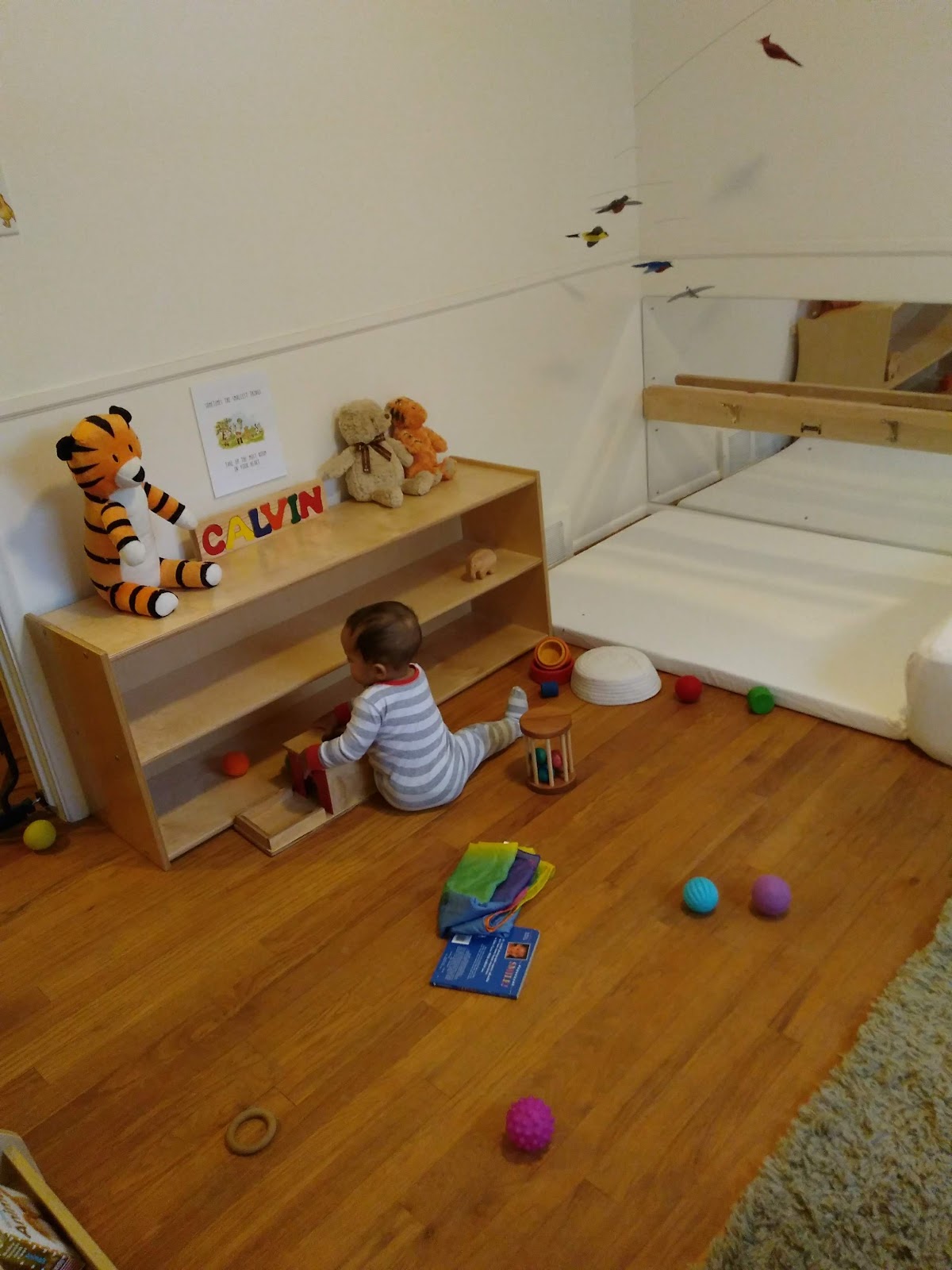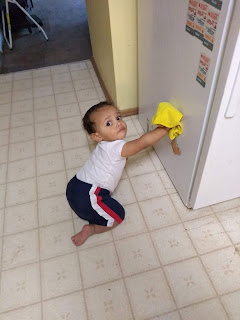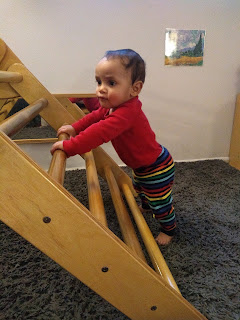Sense of Order
In a Montessori classroom, the final step in a child’s cycle of activity is cleaning up the work and putting it back where it belongs. I’ve had parents of three-year-olds in my class who were quite surprised to hear how proficiently their child could put their work back on the same shelf where they found it and roll their rug and return it to the rug basket. One would think that a room full of young children would be a disaster at the end of the day (and trust me, we do have those days), but for the most part the children take care of the classroom and make sure everything is in its proper place.
“But why doesn’t my child do this at home?” I have been asked. After doing some thinking about it, I have decided that the main reason is probably too much stuff. For everything to be in its proper place, it first needs to have a specific place where it belongs. This is incredibly hard to do when a child has 500 toys. Perhaps an exaggeration, but I remember the daunting task of cleaning my room as a child when my floor was absolutely covered with things that I needed to pick up and figure out where they should go. How much easier it is when everything has a place!
Young children have an extremely strong sense of order. They naturally want everything to be in the correct place. Maria Montessori told of a time she was with a woman and a small child. The woman had taken off her coat and was carrying it and the child was screaming. She was trying all kinds of things to soothe the child, but nothing was working. Maria suggested that she put her coat back on, and when she did, the child stopped crying. The child was distressed by the coat being in the wrong place because of his strong sense of order. (I can’t remember where I read this and I’m sure I have gotten details of the story wrong. If anyone can point me to where this story came from I would be appreciative!)
When Calvin first started crawling, he would pull everything off his shelf. Everything would end up all over the floor. Rarely would he put anything back on his shelf. I wondered what I was doing wrong, but I kept putting his toys back on his shelf in the exact same place each time. Then one day when he was 12 months old we were playing with his basket of balls and he had gotten every single ball out (over 20 of them), and he began putting away balls one by one until he had put every single ball back in the basket. Slowly and with modeling, Calvin is putting things back where they belong more consistently. He puts his books back on his bookshelf. He puts tissues in the trash. He puts his laundry down the laundry chute. (Last week I had some of my laundry on the floor and Calvin picked it all up and put it in my laundry hamper.) After he uses a toy, he sometimes puts it back on his shelf, and when he does put the toy away, it is almost always to the exact spot on the shelf where he got it. There’s that sense of order again.


Calvin, 7 months--toys all over the pace and 12 months--cleaning up his toys (with Jameson’s help, of course)
“A place for everything and everything in its place.” This Montessori motto appeals to a child’s sense of order. If we, as the adults preparing the environment, ensure that everything has a place, then the child will be much more successful at maintaining the order which she seeks.
“But why doesn’t my child do this at home?” I have been asked. After doing some thinking about it, I have decided that the main reason is probably too much stuff. For everything to be in its proper place, it first needs to have a specific place where it belongs. This is incredibly hard to do when a child has 500 toys. Perhaps an exaggeration, but I remember the daunting task of cleaning my room as a child when my floor was absolutely covered with things that I needed to pick up and figure out where they should go. How much easier it is when everything has a place!
Young children have an extremely strong sense of order. They naturally want everything to be in the correct place. Maria Montessori told of a time she was with a woman and a small child. The woman had taken off her coat and was carrying it and the child was screaming. She was trying all kinds of things to soothe the child, but nothing was working. Maria suggested that she put her coat back on, and when she did, the child stopped crying. The child was distressed by the coat being in the wrong place because of his strong sense of order. (I can’t remember where I read this and I’m sure I have gotten details of the story wrong. If anyone can point me to where this story came from I would be appreciative!)
When Calvin first started crawling, he would pull everything off his shelf. Everything would end up all over the floor. Rarely would he put anything back on his shelf. I wondered what I was doing wrong, but I kept putting his toys back on his shelf in the exact same place each time. Then one day when he was 12 months old we were playing with his basket of balls and he had gotten every single ball out (over 20 of them), and he began putting away balls one by one until he had put every single ball back in the basket. Slowly and with modeling, Calvin is putting things back where they belong more consistently. He puts his books back on his bookshelf. He puts tissues in the trash. He puts his laundry down the laundry chute. (Last week I had some of my laundry on the floor and Calvin picked it all up and put it in my laundry hamper.) After he uses a toy, he sometimes puts it back on his shelf, and when he does put the toy away, it is almost always to the exact spot on the shelf where he got it. There’s that sense of order again.
Calvin, 7 months--toys all over the pace and 12 months--cleaning up his toys (with Jameson’s help, of course)
“A place for everything and everything in its place.” This Montessori motto appeals to a child’s sense of order. If we, as the adults preparing the environment, ensure that everything has a place, then the child will be much more successful at maintaining the order which she seeks.



Comments
Post a Comment